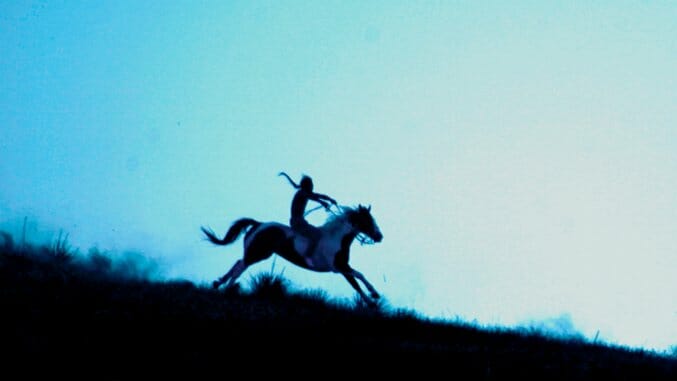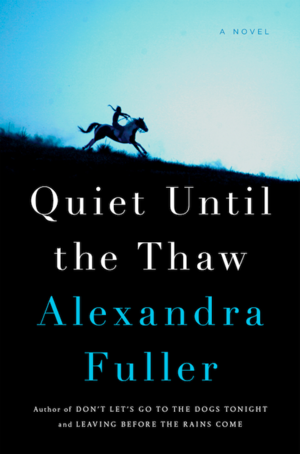
It’s impossible to read Quiet Until the Thaw and not think about the ongoing violence of whiteness in a country that would have looked very different had whiteness never invaded its shores. One of the many points that Alexandra Fuller’s debut novel drives home is that the oppression of Native Americans did not end with the Trail of Tears; it has never ended, in fact. In the same way that Ava DuVernay’s Oscar-nominated film 13th shows that slavery was never abolished (but was merely amended to create mass incarceration), Quiet Until the Thaw shows that genocide against the Native American is an ongoing, white American legacy.
Although many of us are now familiar with the Dakota Access Pipeline, following the recent protests from the Standing Rock Sioux tribe, contaminated water is only one of many ways the U.S. has continued to destroy an entire race. Yet Fuller manages to relay all of these devastating realities while creating a story that is about people who fight against an entire nation of powerful men bent on their destruction. Fuller argues in the presentation of her Lakota Oglala Sioux characters that White America has wreaked havoc, but it has not been entirely successful. As long as there are surviving members of these tribes—people passing on stories like the ones she tells here—there exists a legacy that cannot be cut down.
 Fuller’s concern as a writer (one who was born in England, moved to Rhodesia as a child and found an adopted home with the Lakota Oglala Sioux as an adult) is for this legacy and how it might travel through different generations in spite of White Men’s presence. None of the main or minor characters in her novel are white; none of the white people mentioned are especially significant to her narrative. Whiteness is a fact—a shadow over the other characters we come to know and love. But it is, in a way, simply one of many other facts at work.
Fuller’s concern as a writer (one who was born in England, moved to Rhodesia as a child and found an adopted home with the Lakota Oglala Sioux as an adult) is for this legacy and how it might travel through different generations in spite of White Men’s presence. None of the main or minor characters in her novel are white; none of the white people mentioned are especially significant to her narrative. Whiteness is a fact—a shadow over the other characters we come to know and love. But it is, in a way, simply one of many other facts at work.
Fuller achieves what every creative writer with political and social concerns hopes to achieve, where the political issues of her text do not overwhelm her story with a heavy hand, and yet they are simultaneously a part of the visible and invisible forces at work on the characters’ journeys. And what journeys they undertake. What begins as a tale of two young cousins at odds spirals out into the stories of the woman who raised them and the many Lakota Oglala Sioux who cross their paths. Fuller’s style in presenting this web-like narrative reflects one of her character’s greatest philosophies: one man’s story is never just one man’s story.
Perhaps it is beyond the imagination of the White Man that some people live together not in hierarchy but in stages, and circles, and cycles.
These stages, circles and cycles are embraced in such a way that the actual narrative form reads differently from traditional novels. We follow the cousins, Rick Overlooking Horse and You Choose Watson, through their stages, even as we’re following other characters. The chapters are brief (with great titles like “The Somewhat Accidental Early Political Career of You Choose What Son”), feeling more like poems than prose at times. The ideas, images and themes are no less important than the plot; they are the plot. The historical and political elements are ever-present as well, but Fuller presents them in a matter-of-fact way, almost as if to suggest that even the White Man does not understand his place under certain universal laws.
Time was not stable. Time was like wind, or currents. It did not plod forward; it could flow backward, or spiral inward, or slide around on a plane. All Time was possible, all the time.
These are the kinds of philosophies (presented as facts by different characters) that Fuller writes. As such, her novel resists summary. There’s a lovely brevity to the storytelling; some characters seem to go as quietly as they came, while their legacies continue to live on. And this has to be the case, because this is not a novel where the characters grow or evolve—they are, instead, always becoming. Though it involves pain, becoming is not the same as coming-of-age. Becoming is how characters experience their lives—and even life itself is understood on different terms for characters like Rick Overlooking Horse: “You don’t have a life. You are a life.” Such a realization at a young age sets him on a fascinating journey, but Fuller insists that it is still “just a life.”
It’s a paradox that carries the rest of the novel and the other characters, as they become. Their becoming is informed by their ancestors, by people who fought against the White Men and then fought alongside them in Vietnam, by the police officers who arrest them for petty crimes, by the priests in their schools. Every life in Quiet Until the Thaw is “just a life,” but a story without concern for hierarchies is no less powerful than one with heroes and villains. In telling a story whose form embraces the Lakota Sioux’s philosophies and distinctive life cycles, Quiet Until the Thaw doesn’t just give us an authentic tale of a Native American people’s journey. It offers up a distinctive view of America, and perhaps even pleas for a new understanding of how great American novels can be written.
Shannon M. Houston is a Staff Writer on Hulu’s upcoming series The Looming Tower. She is the former TV Editor of Paste Magazine, and her work has appeared in Salon, Indiewire’s Shadow and Act, and Heart&Soul. She currently has more babies than you. You can follow her on Twitter.